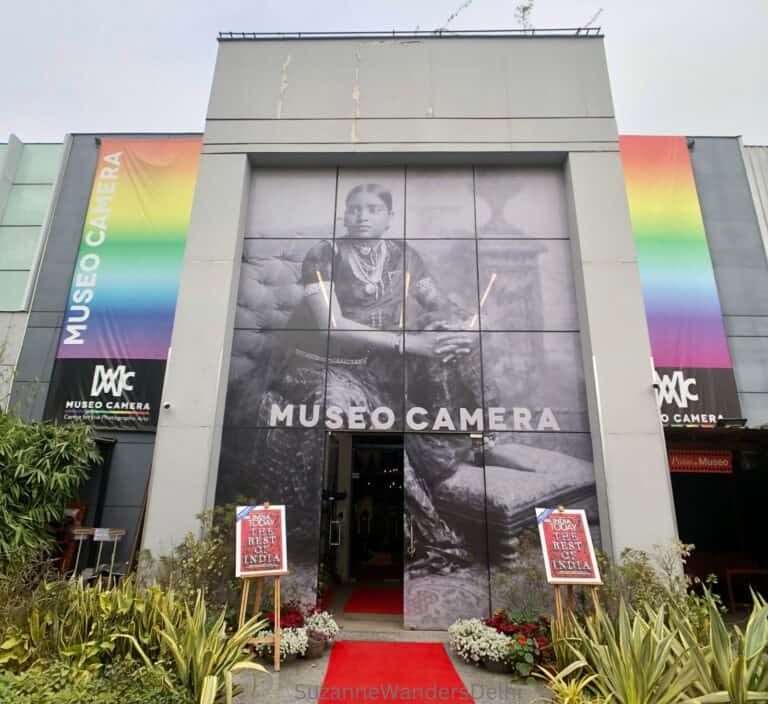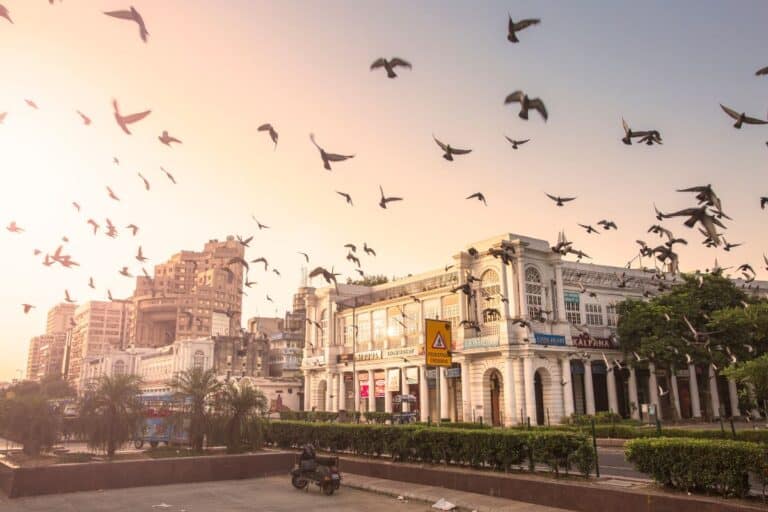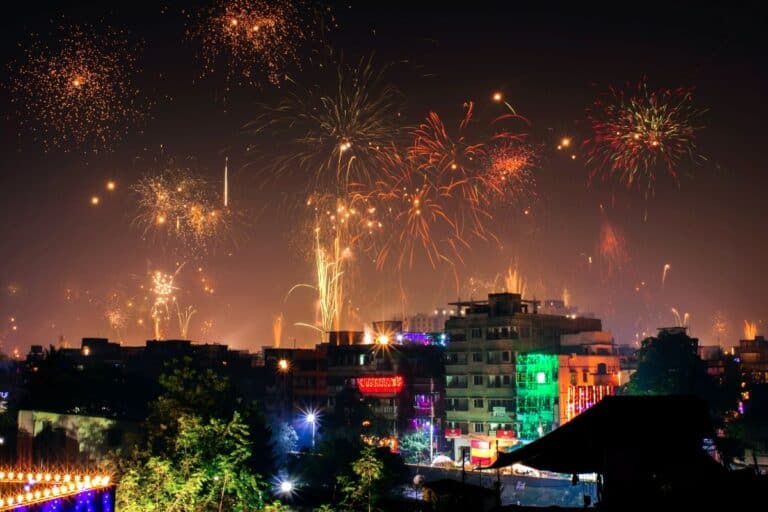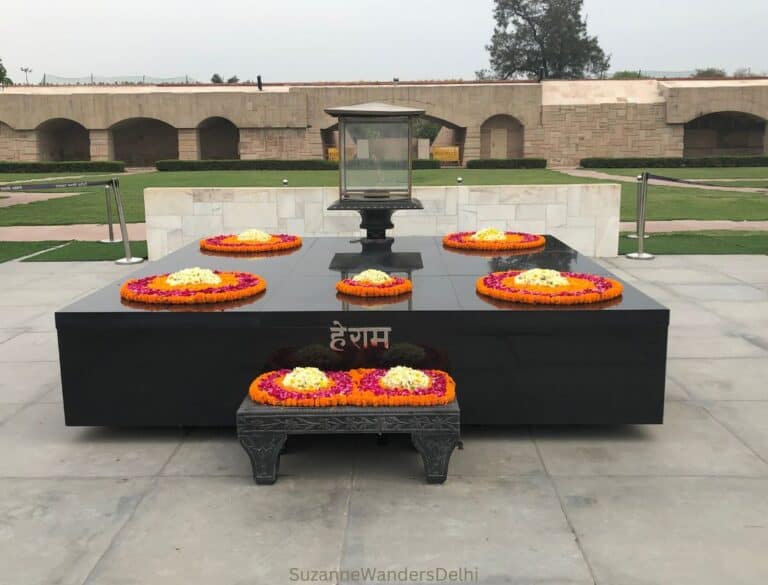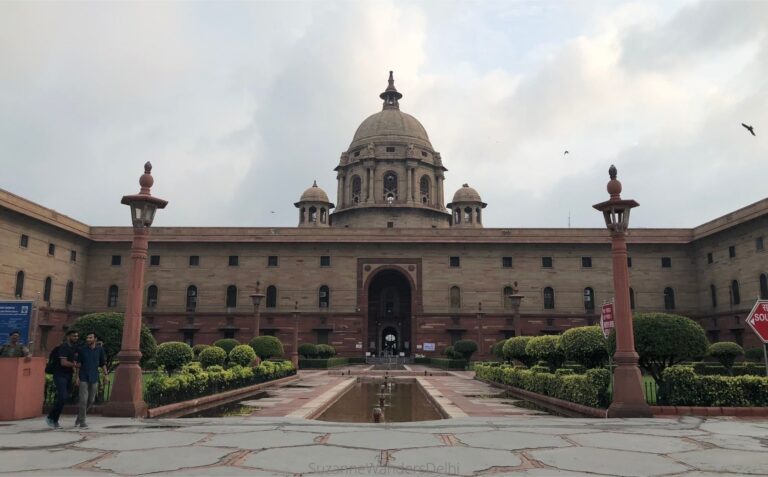Suzanne Wanders Delhi contains affiliate links. If you make a purchase using one of the links below, I may receive compensation at no extra cost to you. I only recommend products and services I use and trust. Read my disclaimer for more information.
If you are in Delhi during Holi you are in for a treat! Holi, known as the festival of colours, is one of the biggest religious holidays in India. You will experience Delhi at its most joyful, captivating and colourful. I live in Delhi and have played Holi a few times. This is how to have fun and stay safe during this important holiday.
What is Holi?
Holi is an ancient Hindu religious festival celebrating the victory of good over evil. The stories of how Holi came about are some of the best known Indian legends. There are two main ones, the story behind the ritual bonfire the night before Holi, and the story of why we play with colours.
How and Where to Celebrate Holi Safely in Delhi
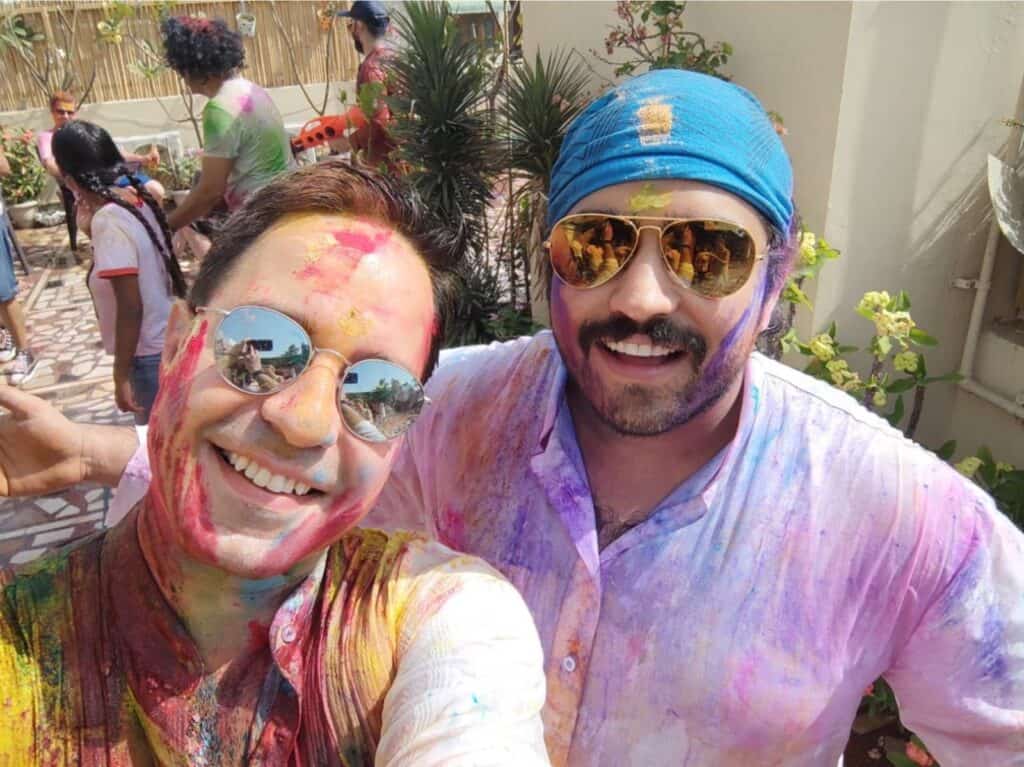
While Holi is a joyous holiday, the anonymity of the colour fight coupled with crowded street, temples and young, intoxicated men does lend itself to petty crime and for women, groping.
The safest way to celebrate and play Holi is at a private function. Public celebrations on the streets and in temples can get very crowded and out of hand. I would avoid these.
I recommend booking a hotel that offers private Holi celebrations, going to a private party, or getting in touch with your consulate or embassy to see if they are hosting a Holi party – many do. If none of these are options, than go out early in the morning to celebrate and return to your accommodations before the streets get too rowdy.
Make sure you book your accommodation well in advance. This is a really popular time – hotels and guest houses in Delhi get booked up early.
Safety and Practical Tips
- always celebrate with a group – if you are alone, join a Holi party through your hotel or consulate/embassy
- stay with your group – even friends and family can be hard to recognize covered in colour
- book your accommodation well in advance – Holi is a popular time of year to visit Delhi
- don’t bring valuables with you
- dress modestly in clothing you don’t mind throwing away after
- avoid drinking bhang thandai, the traditional drink – it is made with cannabis
- oil your skin with almond or coconut oil and cover your hair before playing Holi – the colours can irritate and dry out skin and hair
- wear sunglasses to protect your eyes
- if you have asthma or skin allergies you may want to avoid Holi
- be careful with cameras and any electronics – they can get ruined with all the water and colour (bring plastic bags)
How do People Celebrate Holi in Delhi?
In Delhi, the celebration of Holi lasts two days. The main events of the celebration are Holika Dahan (also called Choti Holi – the burning of Holika) that takes place on the first night of celebrations, and the colour fight that occurs the next day. Celebrations also include food, religious rituals, and visiting friends and relatives.
Holika Dahan or Choti (Little) Holi
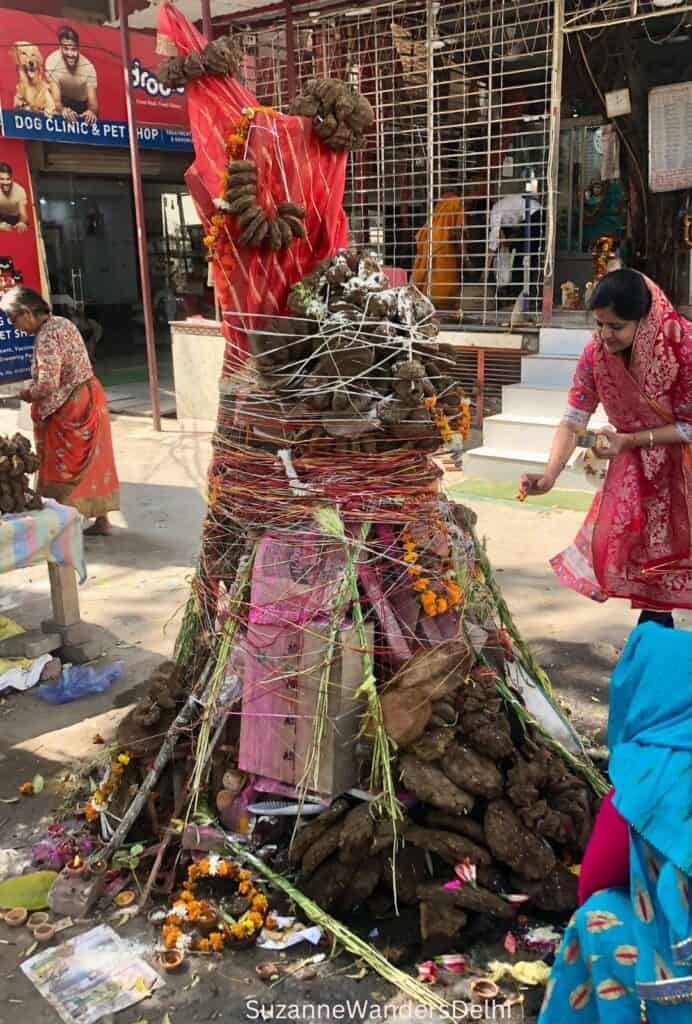
This is the day the religious rituals take place. The main event is the bonfire, called Holika Dahan or Choti Holi, where an effigy of the demoness Holika is burned to represent the triumph of good over evil.
The building of the pyre can start days or even weeks in advance. It is a community event with people adding sticks, dried coconuts and cow dung cakes. An effigy of Holika with Prahlada is placed on the pyre once the ceremony starts. To further illustrate the victory of good over evil, Holika is made of combustible material while Prahlada is not.
The bonfire is lit after ritual prayers. Some people will walk around the bonfire throwing objects into it. Others will smear the ashes on their faces and bodies. Both are believed to remove negativity.
The Colour Fights
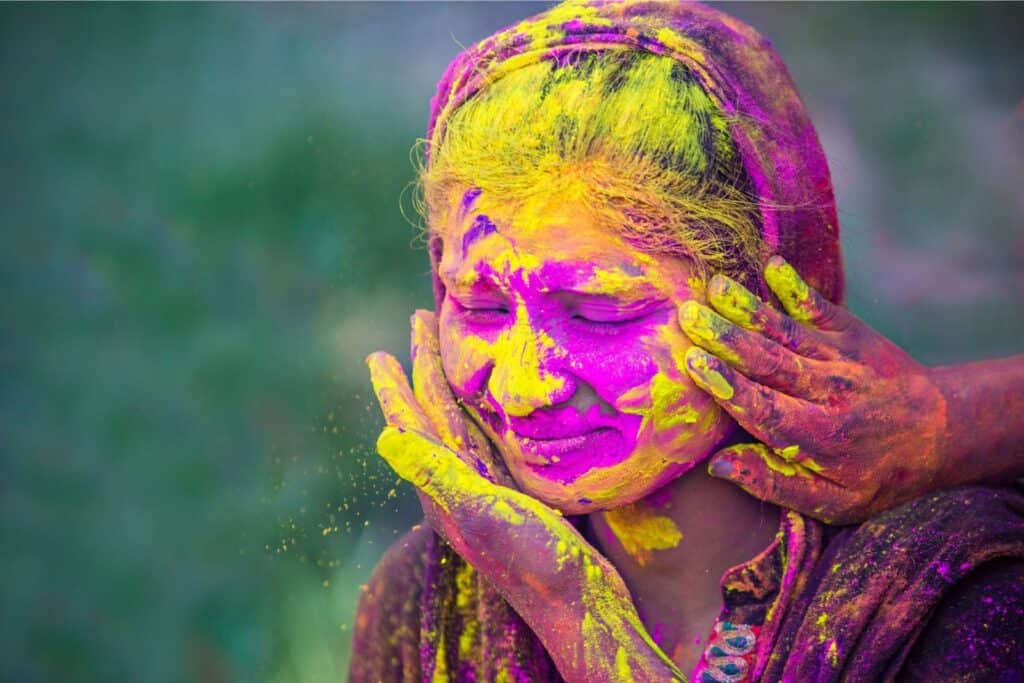
The colour fights begin on the morning of Holi. This part of the festival is not religious at all – it’s all about being joyful and playful.
Make sure you wear old, white clothes today! Something that you can toss away after. The colours will probably stain and ruin anything you are wearing.
On Holi, people go outside to celebrate armed with coloured powders, liquid colours, water guns and water balloons. If you go out on Holi, expect to get drenched and dyed!
While most of the celebrating takes place in the streets and private functions, there will be large crowds at Hindu temples playing Holi, especially those dedicated to Lord Krishna.
When is Holi Celebrated in Delhi?
Holi is Monday, March 24, 2024. Like all Hindu holidays, Holi is based on the lunar calendar and the date changes every year. It is always on the full moon of the Hindu calendar month Phalguna, which is in February or March. Check this calendar for the dates of Holi each year.
Holi lasts for a night and a day, starting on the evening of the Purnima (full moon day) when a ritual bonfire takes place. It ends the next day, when the colour fights happen and everyone takes to the streets to celebrate. The first day is more religious, and the second day is joyful and fun.
Washing Off All That Colour!
To be perfectly honest, washing up after Holi is not much fun. Expect it to take an hour and everything you were wearing will have to go in the trash. You’ll probably find coloured powder in places you didn’t even know existed! But playing Holi is an unforgettable experience and I’m sure it will be worth it!
Depending on what kind of colours you got doused with, the colours may or may not come off easily. The best thing to do is use gentle soap and shampoo, and accept the colours will fade with time.
Some people use a mixture of yogurt and gram flour on their skin to help remove the colour (both are readily available in Delhi shops). If the colours have damaged or dried out your hair, try applying mustard oil to it after the first shampoo and leaving it in for half an hour. Mustard oil is smelly, but it does have a lot of beneficial nutrients for hair.
Why is it Called Holi? The Legend of Holika and Prahlada
A demon king named Hiranyakashipu was granted five magical powers of protection and believing this made him immortal, he forced his subjects to worship him as a god. His son Prahlada refused to do this because he was a follower of the supreme god Vishnu. Hiranyakashipu tried many times to kill Prahlada but was always thwarted by Vishnu.
Together with his demoness sister Holika, Hiranyakashipu devised a plan to kill his son. Holika had a magical cloak that protected her from fire. She took Prahlada into a fire knowing her cloak would protect her, but instead the cloak flew to Prahlada on a gust of wind created by Vishnu. Prahlada was saved from the fire while the demoness burned in the flames.
The night before Holi, a ritual bonfire is burned, often with an effigy of Holika and Prahlada, symbolising the victory of good over evil. The festival is named Holi after this.
The Story Behind the Colour Fight – the Legend of Krishna and Radha
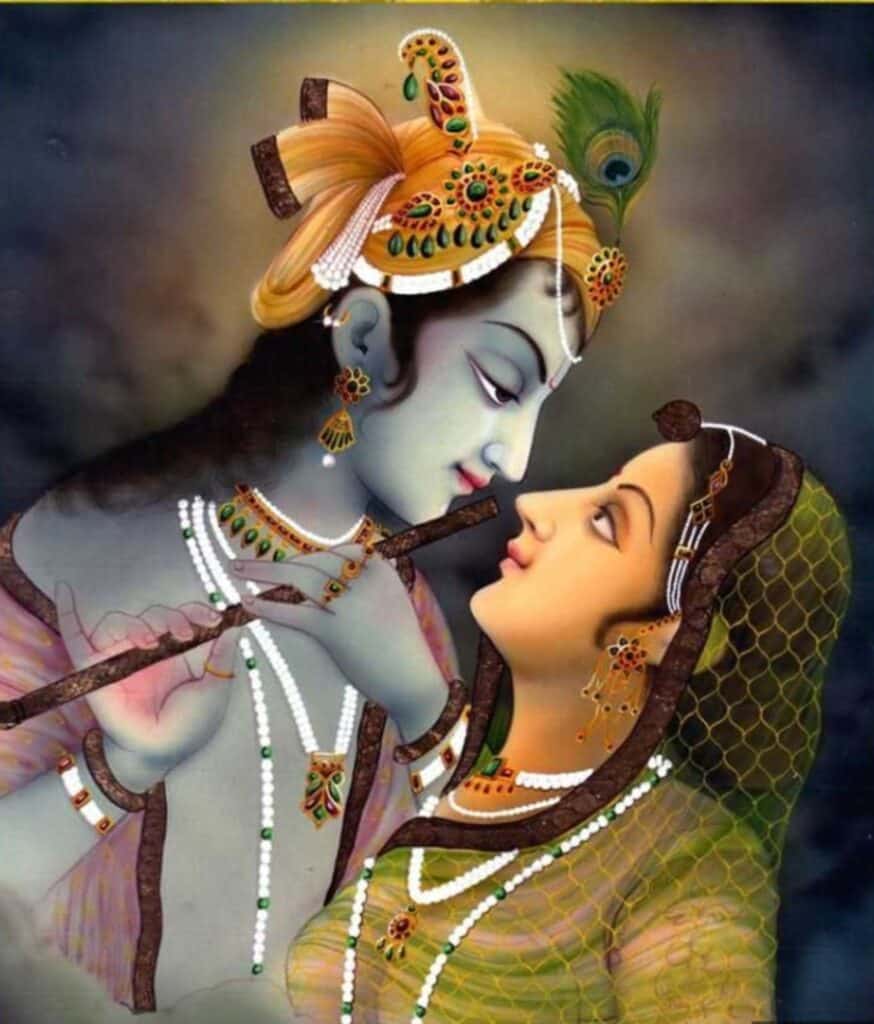
Krishna is one of the most important Hindu gods. He is the eighth incarnation of Vishnu (god of preservation) and is recognised as being the god of compassion, love and tenderness. He is worshipped as the supreme god by many Hindus.
When Krishna was a child, a demon tried to kill him by giving him poisoned milk. Instead of killing him, it turned Krishna’s skin blue. Krishna fell in love with the fair skinned Radha but was self-conscious about his blue complexion.
Krishna’s mother advised him to simply colour Radha’s skin any colour he wanted. He did this and smeared Radha’s face in colour, professing his love for her. To commemorate the love between Krishna and Radha people throw coloured powders on each other every Holi.
Holi Colours and What they Mean
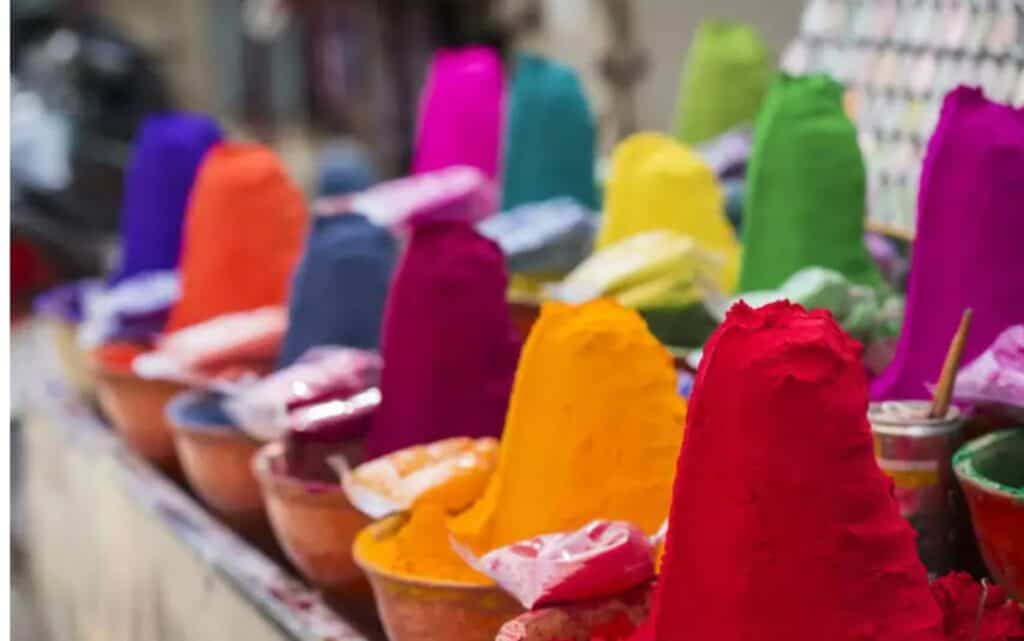
Coloured powders (gulal) can be bought in most Delhi markets leading up to the celebrations. It’s advisable to purchase natural or organic colours because they won’t stain as badly and are less likely to irritate skin.
Originally, everyone used red, but now many colours are available. Each colour has its own meaning:
- Red – purity, love, passion, fertility
- Yellow – happiness, meditation, peace
- Blue – calm, serenity, immortality
- Green – nature, new beginnings, happiness
- Pink – youth, good health, playfulness
- Orange – courage, sacrifice, dominant sacred colour in India
- Purple – supreme peace, wisdom
White and black are not used in Holi celebrations.
The Wrap-Up on How to Celebrate and Play Holi in Delhi Safely
Holi is one of the most important holidays in India, and one of the few that everyone celebrates, regardless of religion or ethnicity. Keep these safety tips in mind, and go celebrate Holi – it will be an unforgettable experience!
Don’t forget travel insurance! It’s always a good idea to carry travel insurance just in case something goes wrong. I really like and use SafetyWing


